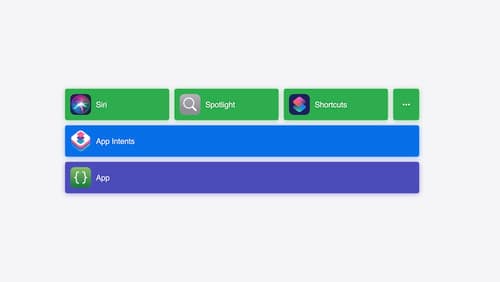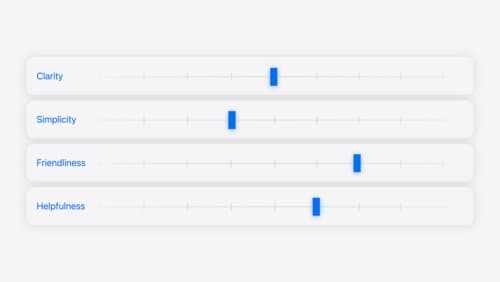How can I start building an app?
Asked on 2024-07-31
1 search
To start building an app, you can follow several steps and utilize various tools and frameworks provided by Apple. Here are some key points and resources from WWDC sessions that can help you get started:
-
Define Your App's Purpose and Audience:
- Before you start coding, it's essential to articulate what your app does and who it's for. This can help guide your design and development process. For example, in the session Add personality to your app through UX writing, there's an exercise to imagine your app as a person and define its voice, which can be a helpful starting point.
-
Use Apple's SDKs and Tools:
- Apple provides a suite of tools and frameworks to help you build apps efficiently. The Platforms State of the Union session highlights the importance of using Apple's native SDKs, such as Swift, SwiftUI, and Xcode, to build highly integrated apps that perform well across Apple devices.
-
Leverage Swiftassist for Coding:
- Swiftassist is a new tool introduced to help with coding tasks. It can assist with prototyping, visualizing ideas, and writing Swift code. You can see an example of how to use Swiftassist in the Platforms State of the Union session.
-
Implement Core Features with App Intents:
- The session Bring your app’s core features to users with App Intents demonstrates how to add features like shortcuts, widgets, and control center controls using the App Intents framework. This can help make your app more interactive and accessible.
-
Create a Splash Screen and User Interface:
- Building a visually appealing and engaging user interface is crucial. The session Build a spatial drawing app with RealityKit shows how to create a splash screen and other UI elements using RealityKit.
-
Utilize Templates for Document-Based Apps:
- If your app involves creating documents, you can use templates to provide a consistent format and style. The session Evolve your document launch experience explains how to add template support to your app.
By following these steps and utilizing the resources provided in these sessions, you can start building a robust and user-friendly app. If you need more detailed guidance on any specific aspect, feel free to ask!

Build a spatial drawing app with RealityKit
Harness the power of RealityKit through the process of building a spatial drawing app. As you create an eye-catching spatial experience that integrates RealityKit with ARKit and SwiftUI, you’ll explore how resources work in RealityKit and how to use features like low-level mesh and texture APIs to achieve fast updates of the users’ brush strokes.

Bring your app’s core features to users with App Intents
Learn the principles of the App Intents framework, like intents, entities, and queries, and how you can harness them to expose your app’s most important functionality right where people need it most. Find out how to build deep integration between your app and the many system features built on top of App Intents, including Siri, controls and widgets, Apple Pencil, Shortcuts, the Action button, and more. Get tips on how to build your App Intents integrations efficiently to create the best experiences in every surface while still sharing code and core functionality.

Add personality to your app through UX writing
Every app has a personality that comes across in what you say — and how you say it. Learn how to define your app’s voice and modulate your tone for every situation, from celebratory notifications to error messages. We’ll help you get specific about your app’s purpose and audience and practice writing in different tones.
